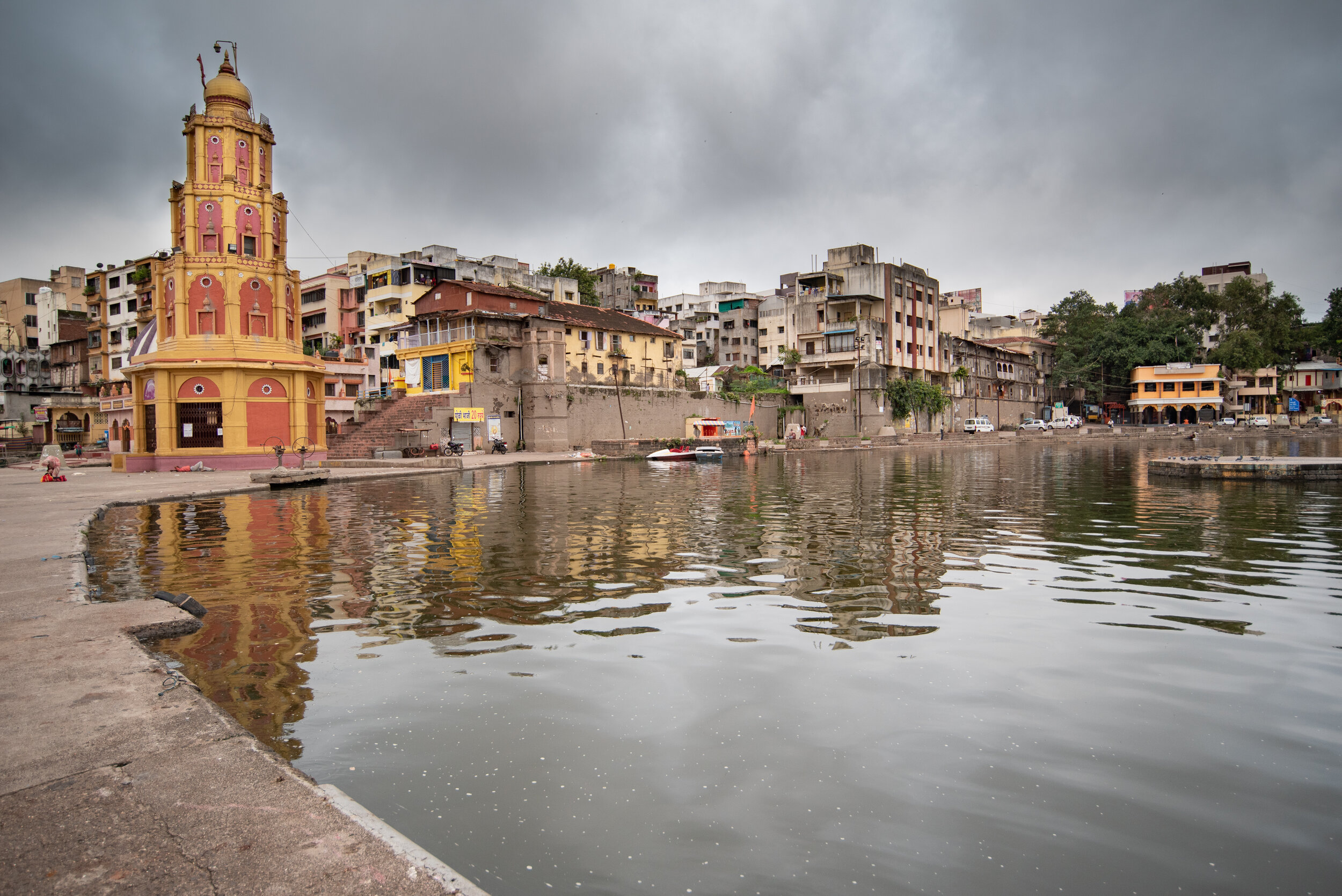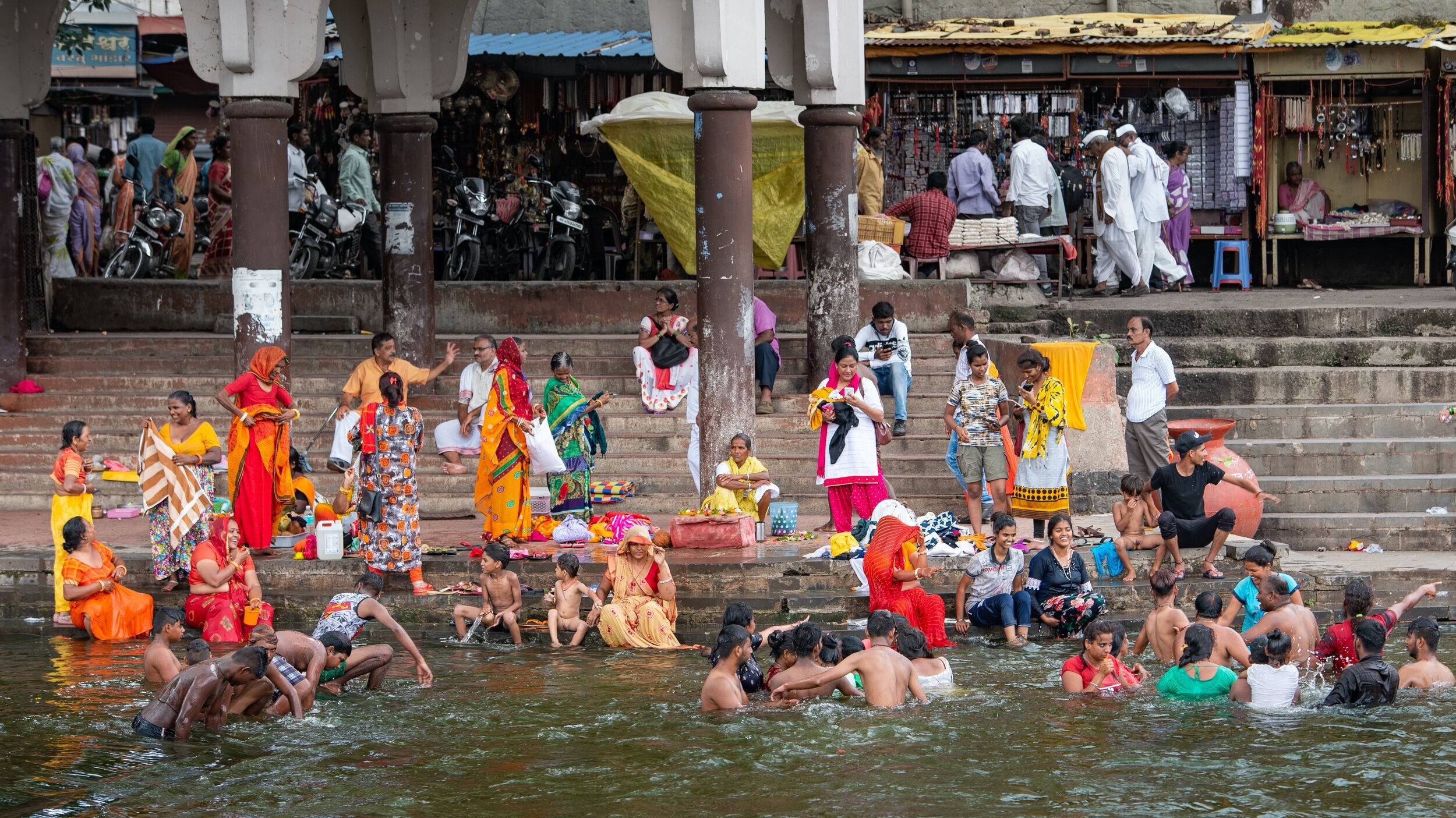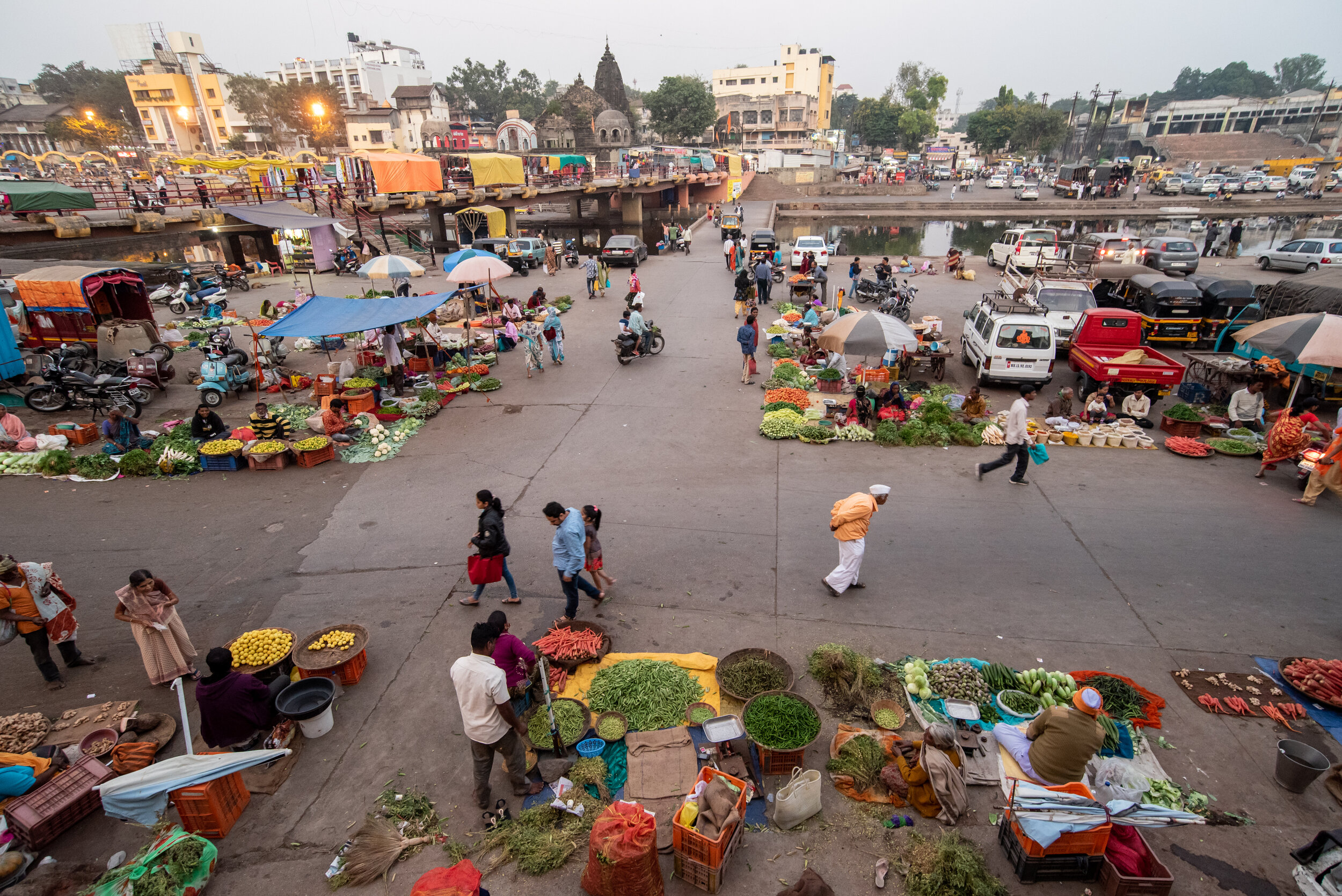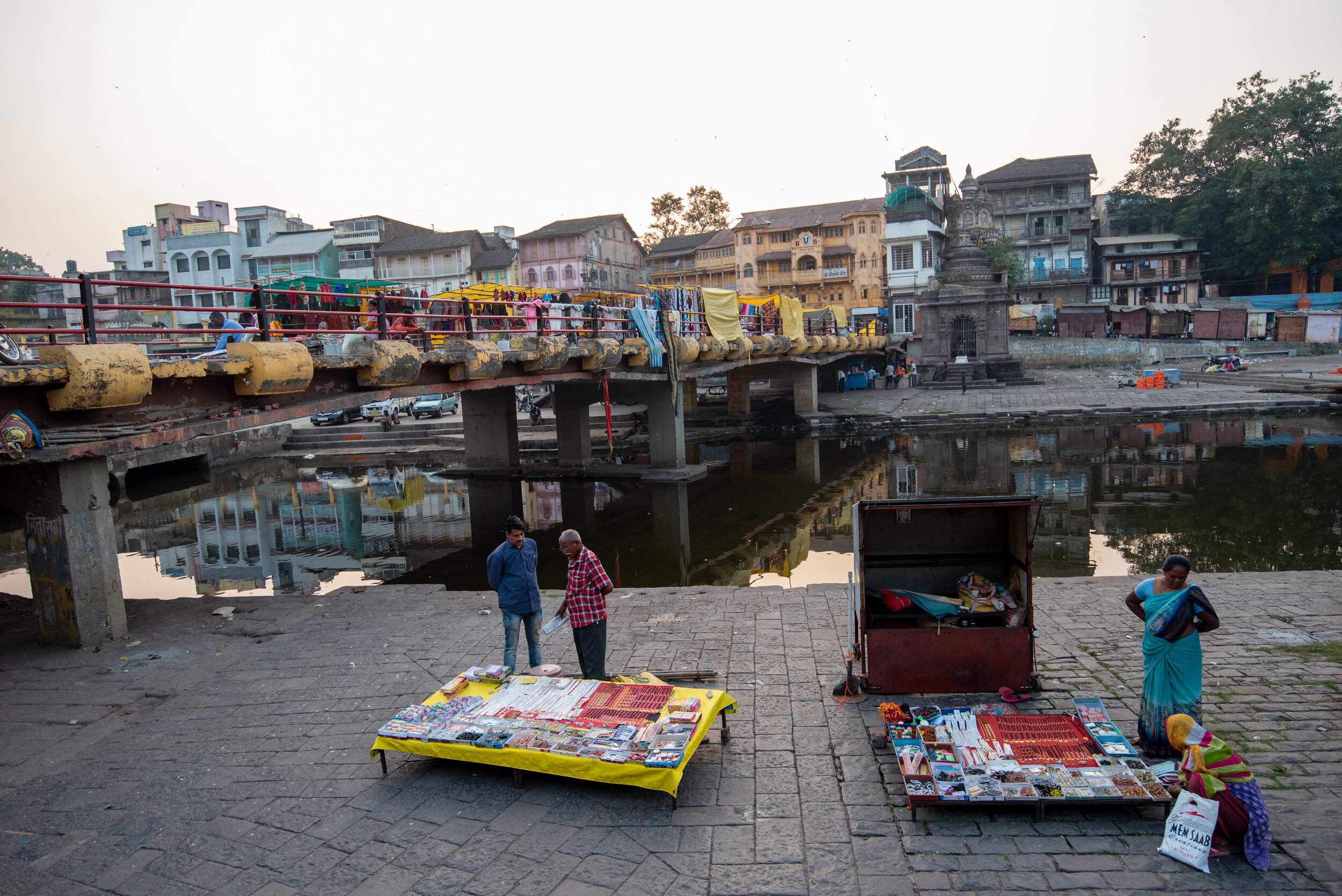The Web as Urban Archives: Nashik's history in the mobile phone
by Ayona Datta
Recently I received my first digital capacity training. Our research assistant and I were talking to a 74-year-old vendor in the Godavari river front in Nashik. This vendor has lived with the river since childhood. I asked him whether he remembered what the river looked like when he was young. He promptly replied, ‘You have a mobile phone, you can find out’. ‘How?’ I asked. ‘You take the phone in your hand and start that thing that connects you to the international [sic]. You can then talk to the phone and ask it to show you images of Goda Ghat at any time – 100 years, 50 years ago. One of my customers showed me. He spoke to the phone, and the phone found so many images from the international [sic]. You should try that’.
His words disrupted the hierarchical structures of what we know as the ‘urban archives’ even as they reinforced the popularity of the world wide web as the window to urban history. Documented ‘Histories’ of the state and public institutions housed in archives albeit underfunded and poorly maintained were never accessible to the poor, even as they legitimised ‘authentic’ accounts of what came before for urban historians. Our vendor’s suggestion that Siri (or its equivalent) would be able to present an instant visual history of the urban, speaks increasingly to how urban history in its limited web form is now within the grasp of the poor.
The web as urban archives
Does this mean that the web has overseen the active devaluation of documentary archives in the global south, particularly in the context of cash-strapped governments and municipalities. Paper documents take space, require maintenance and careful cataloguing, require human resources and crucially can hold uncomfortable ‘truths’. There has been a move therefore to actively destroy archives in India by legitimising an economic logics of cost-benefit. Documents deemed to be important by the state are digitised, rest are put in storage rooms or destroyed forever. TO a certain extent this indicates the declining validity of the archives as crumbling documents and of the web as the curator of urban history for ordinary citizens.
Yet in the absence of documented histories of the subaltern, even the images on the web are reflections of a higher status of the archives. Images of Godavari river are those taken by European travellers and photographers documenting life along a river through a colonial gaze. In these images, the people of Nashik are reduced to exotic objects that produce a spectacle of mythology and spirituality with water which so intrigued western rationality in the early 20th century. These images are documentations of a river made holy rather than indigenous or subaltern cultures of the river. For the poor living of the river, ravaged by forced movement either before or after independence (in 1947), as flood refugees, as refugees of city beautification and slum eviction drives, and more recently as climate change refugees, documents of subaltern lives and struggles have always been one of the first casualties of archived history. Stripped of formal evidence of their status (if it ever existed) the poor spend a lifetime accumulating evidence of their belonging through grey documents - rental records, utility bills, food subsidy cards, bank statements and so on. These never make their way into archival record rooms or the web. In fact subaltern histories have always had the status of ‘doubtful’ citizenship since acknowledging these histories would also mean giving rights to those without ‘legitimate’ status in state records.
Our vendor’s reliance on the web as a window to the river’s history thus evoke the question - What happens when indigenous and long-term residents of a place begin to see the internet as a curation of their history? What happens when urban history is represented by words and images revealed through google searches and algorithmic matching? The access to history in this way evokes what Mark Graham has called ‘information geographies’ - a way of signifying the augmented or saturated nature of places with information” For Graham, information geographies have no ontological stability since they are continuously re/produced through encounters between subjectivities, knowledge and places.
The use of the web in this way brings with it a whole new set of assumptions that positions it as more endurable, less manipulable and destructible than paper archives. And it connects the virtuality of the web with the materiality of the digital rather than of the archival. This materiality is the mobile phone, which has become almost ubiquitous amongst the urban poor, indeed more valued by the poor as a singular source of information, communication and livelihood. The use of the voice-enabled services of the mobile phone to access urban history even as they are left out of it suggests how informational urban geographies for the poor are funnelled through the capacities of the single most important technology in the hands of the poor.
Archives by algorithms
For our vendor, the Godavari river is everyday life, leisure and livelihood. The river was life giving water, ablutions, economic sustenance and a connection with one’s ancestors. But in the run up to the 2003 Kumbh mela, the municipality poured concrete in the basin, concrete along the sides and concrete through the middle. The argument was that it would make cleaning the river easier and make it easier for the tourist-pilgrim to get closer to the river. In doing so, it choked the natural aquifers and rivulets and covered centuries of heritage and attendant mythologies under it. It also contributed to increased flooding and pollution of the river. Grassroots organisations working in Nashik seek to subvert these dominant narratives of river modernisation and have filed several petitions with the Bombay High Court and with the National Green tribunal to remove the concrete. More recently under the 100 mart cities scheme the Municipality proposed beautification of the riverfront where de-concretisation was initially part of the plan, but is yet to materialise.
Our vendor has lost his home and livelihood several times in the floods, he is regularly removed from the river front for trading ‘illegally’, he has faced devastating thefts of his merchandise, and yet he staunchly remains moored to the ghat. His memories are embodied in stories of playing in the river as a child, selling trinkets to pilgrims during the Kumbh Melas and other experiences that made the river his life, lifeblood and afterlife.




Nashik’s urban archives do not hold accounts of these subaltern and embodied histories of place because those histories were always vested in local and oral traditions, through embodied and material experiences of subaltern bodies. More significantly web-voice searches of Nashik’s history do not provide links to its contentious politics of beautification, destruction and modernisation.
Ordinary citizens’ access to urban history, is now determined by algorithms that are programmed to recognise the past as a repository of maps and images on the web, rather than a political process that is contested and negotiated in the current times. This has transformed the way that the urban poor ‘see’ the city, indeed see themselves in the city and thus imagine possible urban futures for themselves. In a context where the mobile phone is often taken as an authentic route to information, its impact on subaltern knowledge of urban history in a digital age is yet to be fully understood.
